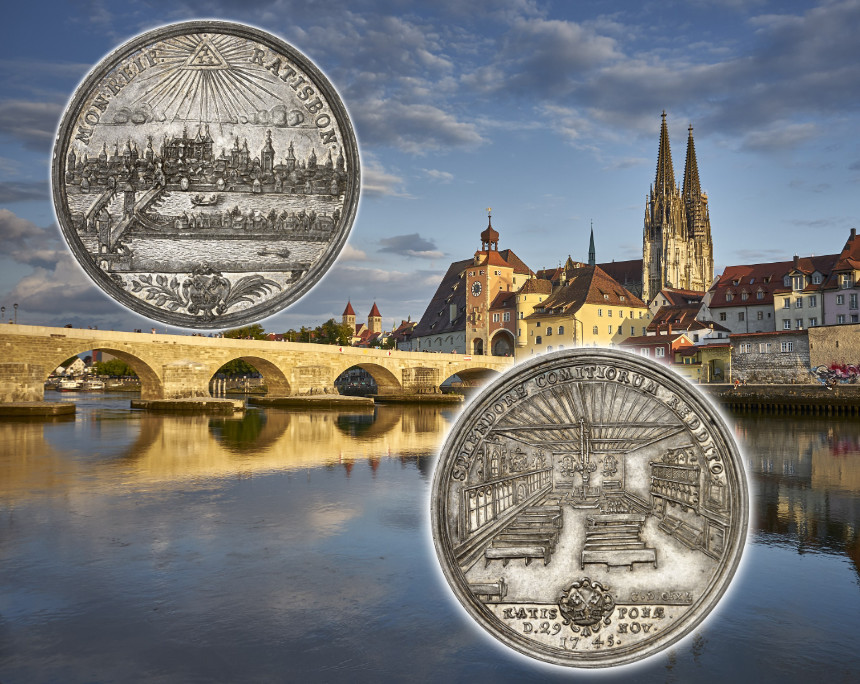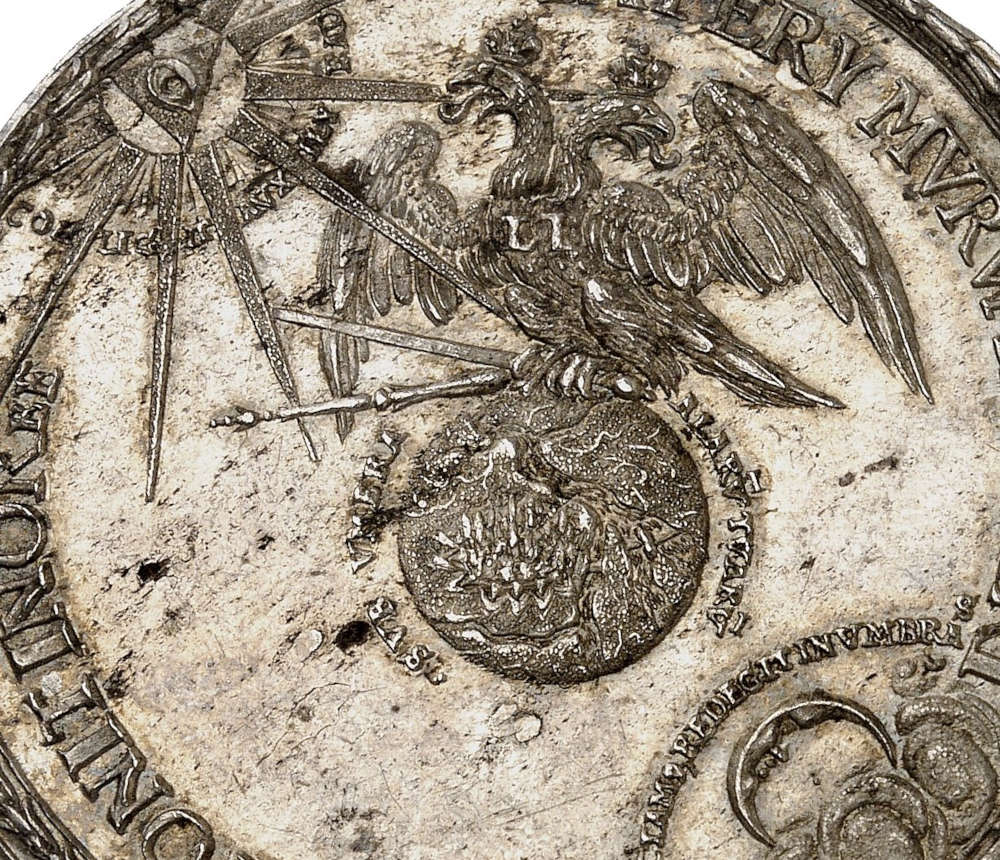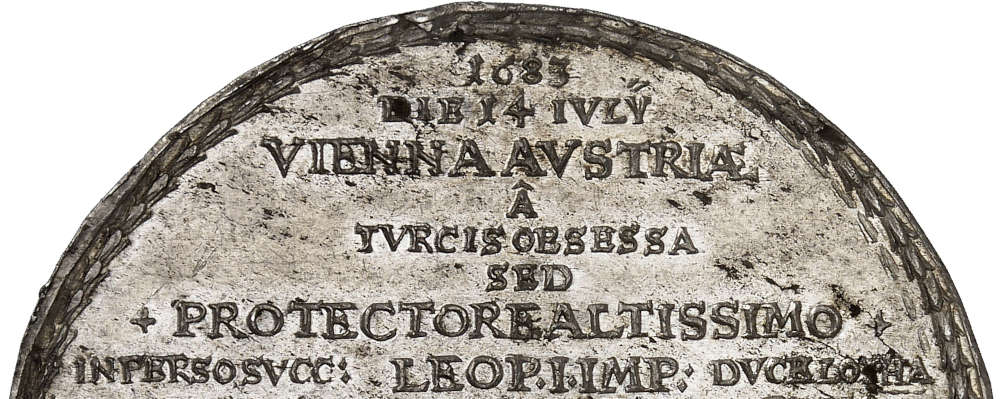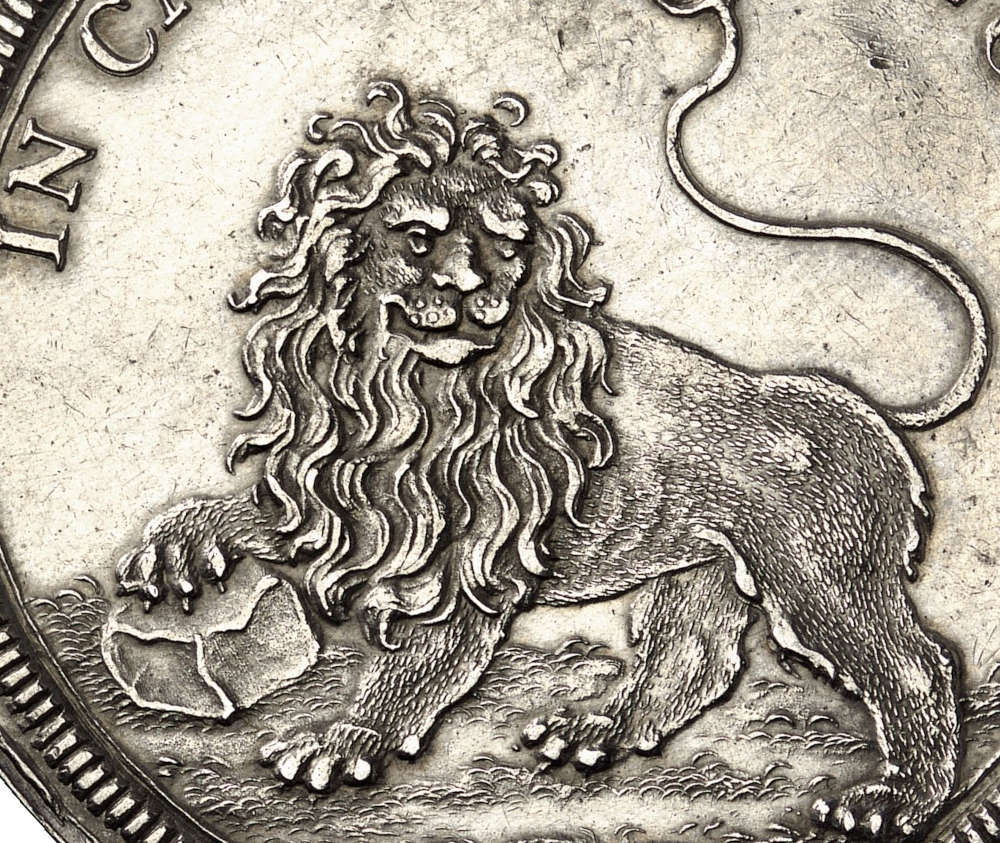Regensburg: Where the Emperor and the Empire Met
On 20 March 2024, Künker will offer an extensive collection of Regensburg rarities comprising more than 300 lots. The offer includes many gold and heavy silver coins, depicting not only the city’s coat of arms but magnificent and representative city views.
Content
They bear testimony to the fact that the Regensburg mint was a master of its craft. While other cities also minted beautiful coins in the Baroque era, the number, variety and especially the many different dies used for multiple Regensburg issues is striking. And there is a good reason for this: Regensburg was in high demand of representative issues. After all, it was sort of the capital of the Holy Roman Empire, although the term capital would be anachronistic. So, let’s put it differently: Regensburg was the place where the representatives or rather the envoys of German principalities and cities met. They were in Regensburg to meet the emperor’s representative to jointly adopt new legislation for the empire.

Regensburg. Double reichstaler n.d. (1711-1740). Regensburg city view. Rv. Portrait of Emperor Charles VI. Very rare. Extremely fine to FDC. Estimate: 10,000 euros. From Künker auction 405 (20 March 2024), No. 3196.
The Origins of the Perpetual Diet
But why was Regensburg the place where the Perpetual Diet sat? To answer this question, we have to look east, where the Habsburg Empire fought the Ottomans for supremacy in the Balkans. In theory, these territories did not belong to the Holy Roman Empire. Thus, the imperial estates were not obliged to finance any war against the Turks. But the Habsburgs were always out of money and eyeing the resources of the better-off imperial princes. In fact, they succeeded in making the imperial estates believe that the extension of Habsburg rule was the great final battle of Christendom against the “infidels”. The imperial estates accepted their arguments and repeatedly agreed to pay taxes to fund the war.
Of course, introducing empire-wide taxation can only work if the Imperial Diet and the emperor had reached an agreement on this matter. And the imperial estates took advantage of the ruler’s need for money to sell their consent for imperial concessions. So, when a new Diet convened in Regensburg on 20 January 1663, the main issue was the participation of the estates in the so-called electoral capitulation. Since 1619, every new emperor and all imperial officials had been sworn into office by taking an oath on such an electoral capitulation. Today, we might refer to such an act as a sort of constitution. So far, the electors had written the electoral capitulation in consultation with the emperor to be elected. Now, the other imperial princes also wanted to have a say in the rules that were to govern the new emperor’s reign.
The taxes to fund the war against the Turks and the electoral capitulation were just two of many extremely controversial issues that had piled up after the end of the last Imperial Diet of 1653/4.
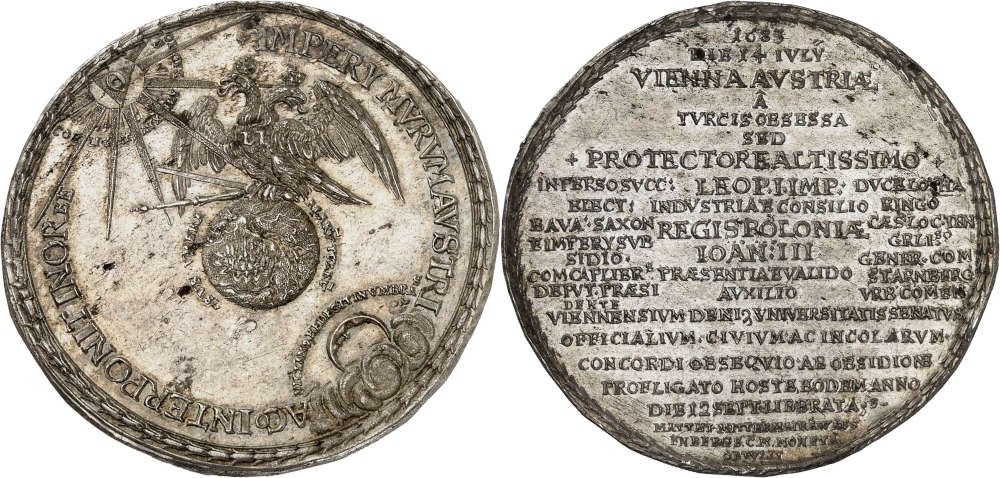
Leopold I. 1683 silver medal by M. Mittermaier commemorating the Ottoman wars. About FDC. Estimate: 1,000 euros. From Künker auction 406 (20-22 March 2024), No. 4551.
A silver medal by Leopold I indicates what kind of arguments all emperors and their representatives brought forward – even though this piece was not produced until 20 years after the Imperial Diet was convened. We know that this medal was intended for widespread distribution. After all, large quantities of the piece were produced by a roller press, which is why some numismatists rather call it a representative taler than a medal.
The piece is dedicated to the failed siege of Vienna and depicts the gloomy scenario that the Habsburgs had been warning against for almost half a century: if no army was to confront them in the Balkans, the Turks would conquer Austrian Vienna, thus entering the Holy Roman Empire.
Therefore, the long inscription on the reverse starts with the words: VIENNA AVSTRIAE A TVRCIS OBSESSA – after Austrian Vienna was besieged by the Turks. This word is of utmost importance because Vienna was located at the very border of the empire – but still inside the empire. In this case, and in this case only, the imperial estates would have been obliged to pay taxes for its defence. Pressburg, today’s Bratislava, on the other hand, was only a day’s march from Vienna but was not part of the empire. Therefore, defending Pressburg would actually have been a matter of the Habsburgs only.
The Habsburgs therefore implored the imperial estates to give them money in order to prevent the Turks from advancing into the empire. But despite all the propaganda, no agreement was reached. In an attempt to avoid the embarrassment of making public that the empire was unable to reach any decision, they simply continued their sessions, passing minor decrees regarding individual issues, which were called Reichsschluss (imperial decision) instead of Reichsbeschluss (imperial resolution). A small but very important difference!
Although it was never decided to make the Imperial Diet a permanent body, it just happened. There were occasional discussions – for example in 1668, 1670, 1687 and 1741 – about whether to dissolve the Diet, but in the end they simply continued.
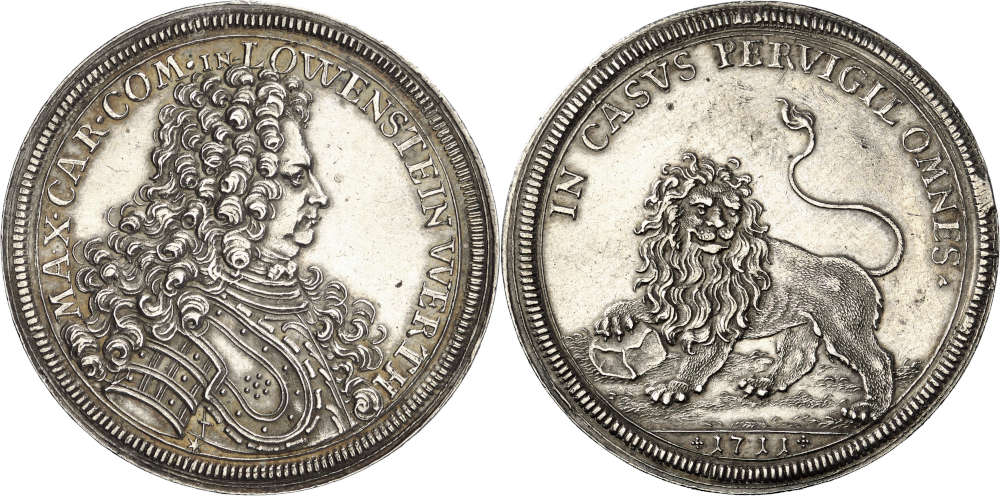
Löwenstein-Wertheim-Rochefort. Maximilian Karl. 1711 reichstaler, Wertheim, commemorating him being appointed member of the Imperial Chamber Court (Reichskammergerichtsrat). Very rare. Extremely fine. Estimate: 5,000 euros. From auction 406 (20-22 March 2024), No. 4253.
The Regensburg of Envoys
Of course, neither the emperor nor the imperial princes or mayors had the time to always be present in Regensburg in order to pursue their political interests. Therefore, Regensburg became a city of envoys and representatives. We know of more than 70 diplomats that set up permanent residence in this city. While important rulers could afford to have their own representatives, smaller princes and imperial estates asked one of the diplomats that were in Regensburg anyway to keep an eye on their interests.
Princes and diplomats communicated via letters, which is why Regensburg became a hub of the Imperial Mail. It is certainly no coincidence that a member of the Thurn und Taxis family, the dynasty in charge of the Imperial Mail, acted as Principal Commissioner, i.e., as deputy to the emperor from 1748 on.
In auction 406, Künker presents an extremely rare taler minted on behalf of the Principal Commissioner Maximilian Karl of Löwenstein-Wertheim-Rochefort in 1711. Maximilian Karl’s career is typical of an envoy. Born into a rather insignificant county, he rose through the ranks in the service of the emperor: In 1684, he was appointed member of the Aulic Council (Wirklicher Reichshofrat), in 1699 he became Privy Councilor of the Hereditary Lands (Geheimer Rat der Erblande). And in the very same year, he was given an important position in the empire when he was promoted to imperial plenipotentiary to the Upper Rhine and the Franconian imperial circle. Maximilian Karl proved to be a shrewd diplomat who repeatedly succeeded in obtaining funds from the imperial estates for Habsburg war efforts – this time not for the purpose of expanding their rule in the Balkans but for the War of the Spanish Succession. As a reward, he was elevated to the rank of imperial prince in 1711, was appointed member of the Imperial Chamber Court (Reichskammergerichtsrat) in the same year and became Principal Commissioner in Regensburg in 1712, primarily to secure funding for a future war against the Turks.
The reverse of the magnificent coin shows a depiction that gives room for several interpretations. For one, let us take it literally: there is a lion holding a stone – quite fitting for the Count of Löwenstein (English: Lionstone). However, we also have to take the motto into account, whose translation reads Always be vigilant. After all, we rather know this pose and the stone in connection with a crane as a symbol of vigilance. The crane was believed to hold a stone in its talon so that – should it fall asleep and drop the stone – it would immediately wake up from the noise. People in the Baroque era loved ambiguous images like these.
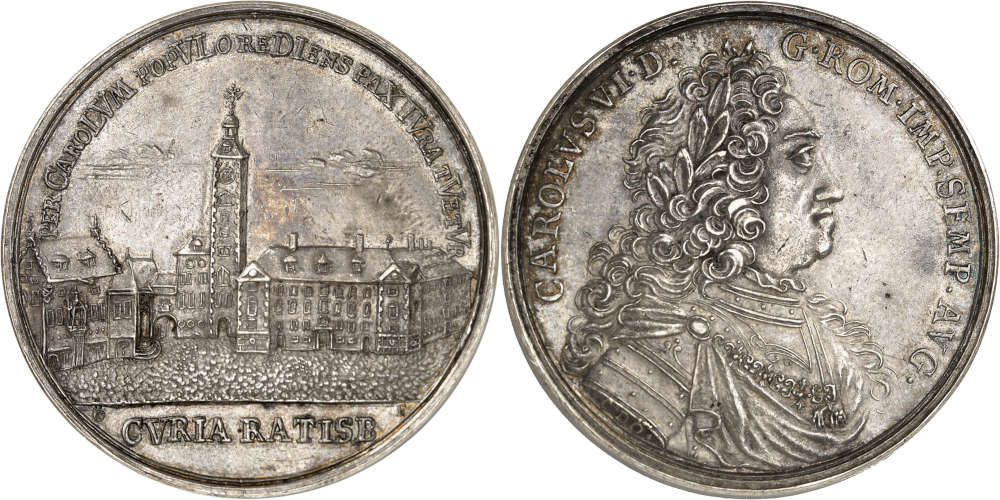
Regensburg. 1637 broad double reichstaler. Old town hall of Regensburg. Rv. Portrait of Emperor Charles VI. Extremely rare. Extremely fine. Estimate: 10,000 euros. From auction 405 (20 March 2024), No. 3197.
As Principal Commissioner, Maximilian Karl von Löwenstein and his two co-commissioners were responsible for all propositions – today, we would probably speak of draft bills. These propositions were then discussed by the Imperial Diet. Of course, the propositions were not debated by all of them at once in the large assembly hall but first discussed within groups of the same rank.
These groups met in Regensburg’s Old Town Hall, which is a museum today that deals with the importance of the Holy Roman Empire and presents it within the context of the city’s history. The various meeting rooms where the representatives of the imperial estates struggled to reach agreements can still be visited today.
After all, every estate had its own room. The most beautiful was for the electors or rather their envoys (so-called Komitalgesandte, as all diplomates in the service of important princes were called). The term derived from the Latin word comitia (= assembly of citizens). The diplomats of the imperial princes sat in a somewhat less lavishly furnished chamber, and their discussions were chaired alternatively by the envoy of the Archduke of Austria and the Archduke of Salzburg. Of course, there was also a room for the imperial cities, whose spokesman was the representative of the respective meeting place, i.e., Regensburg, but nobody listened to the imperial cities anyway.
In addition to the large room, there was also a small room to which the envoys retreated in order to solve tricky questions off the record, i.e., in the absence of the secretaries.
Only when the various groups had found agreement among themselves did they move to the large council chamber in order to work towards a joint agreement. Once agreement had been reached, the Principal Commissioner was consulted. And if the latter agreed on behalf of the emperor, an imperial decision could be adopted.
Of course, these steps were much more complicated than mentioned above, but there is no need to go into more detail at this point. So, it was no surprise that a highly-specialized group of politicians developed in Regensburg. And others paid large sums to obtain their inside knowledge.
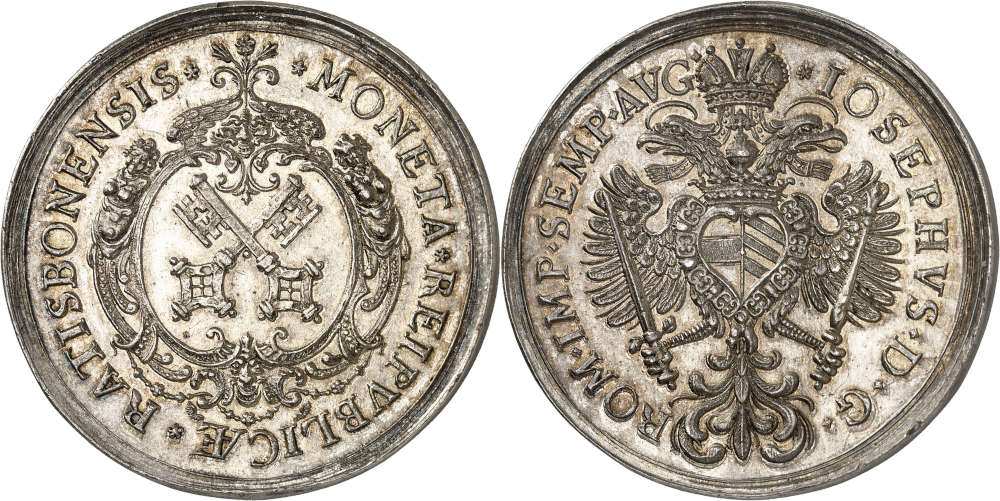
Regensburg. Double reichstaler n.d. (1705-1711). Very rare. Extremely fine. Estimate: 5,000 euros. From auction 405 (20 March 2024), No. 3181.
And this brings us to the many Regensburg coins, with a remarkable proportion of heavy silver coins and splendid gold issues. Let us remember that well into the 19th century, it was completely normal for private individuals to take silver or gold to a mint in order to have the metal struck into representative coins of the common currency for a small fee. Let us also keep in mind that the envoys acted as representatives of their princes and were responsible for distributing appropriate diplomatic gifts on certain occasions. Such occasions included the ruler’s birthday, the New Year and, of course, coins also changed hands when the envoys worked towards pursuing particularly important interests. Those who did not receive appropriate coins but raw material from those who sent them to Regensburg had this material minted into coins at the Regensburg mint.
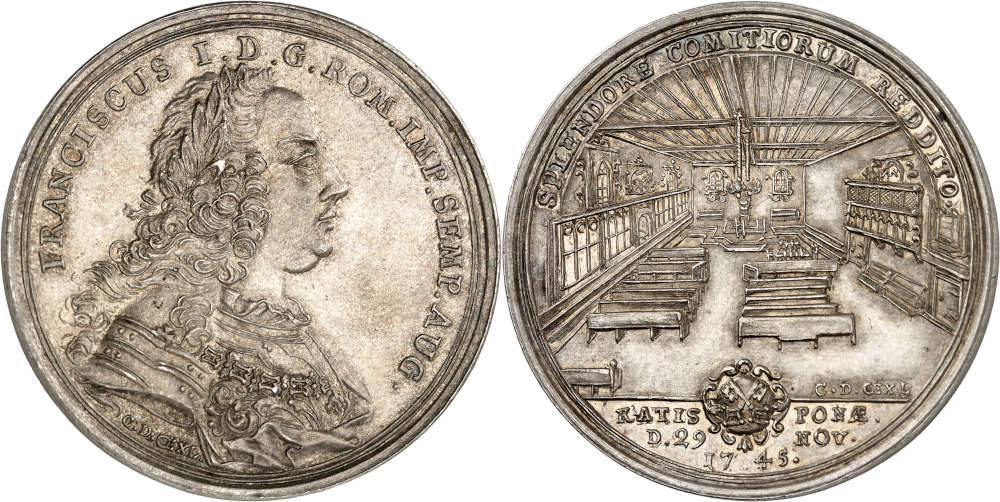
Regensburg. 1745 reichstaler commemorating the return of the Perpetual Diet to Regensburg. Extremely rare. According to official records, only 133 specimens minted. Extremely fine to FDC. Estimate: 10,000 euros. From auction 405 (20 March 2024), No. 3251.
The Hierarchy in the Assembly Hall: A Mirror of the Pecking Order in the Empire
The Perpetual Diet only left Regensburg two times – once during the plague years of 1713/4 and once after the Wittelsbach Charles VII had asserted himself as emperor at the beginning of Maria Theresa’s reign. He moved the entire Diet to Frankfurt am Main, a decision that was immediately reversed by Francis I of Lorraine after his election in 1745.
We owe one of the most fascinating Regensburg coins to this decision. It depicts the large hall in which the imperial estates met with the emperor. The artist Andreas Geyer has left us a precisely annotated copper engraving, which helps us to decipher the depiction.
At the front, four steps high, there was an armchair covered in red fabric that was exclusively for the emperor or the principal commissioner. The Archbishop of Trier sat two steps lower. On either side of the emperor, of course also two steps lower, sat the envoys of the electors, neatly arranged according to their rank – the ecclesiastical princes to the right, the secular princes to the left.
At the front right, functionaries such as secretaries and officials sat at various small tables. The long bench by the window in the front was for the representatives of the ecclesiastical princes, while secular princes sat opposite on the right. The benches in the room were for the remaining envoys, led by the representatives of the Bishops of Osnabrück and Lübeck at the front left.
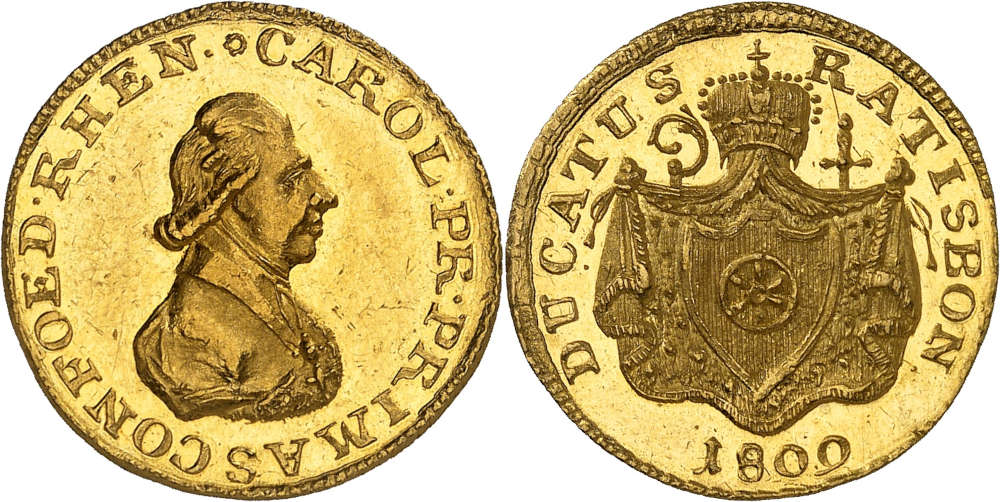
Principality of Regensburg. Carl Theodor von Dalberg. 1809 ducat. Extremely rare. Extremely fine. Estimate: 20,000 euros. From auction 405 (20 March 2024), No. 3320.
Even a Perpetual Diet Cannot Last Forever
Influenced by Napoleon, the Imperial Diet adopted the Final Recess of the Imperial Deputation (Reichsdeputationshauptschluss) on 25 February 1805. This resolution was intended to compensate secular rulers for the loss of territory that France had inflicted on them on the left bank of the Rhine. For this purpose, ecclesiastical dominions were secularized and smaller secular dominions were combined with each other to form larger ones. While this sounds logical and reasonable, it deprived almost 5 million people living on 45,000 square kilometers of their old rulers, laws and customs. The nation-state was on the rise, ruthlessly disposing of what was referred to as the antiquated past. Regensburg itself was also affected by this. It became part of the dominion of the former Archbishop of Mainz, Konstanz, Worms and Regensburg, Karl Theodor von Dalberg. Nevertheless, the Imperial Diet continued its work until the Empire was dissolved on 6 August 1806.
This event probably shook Regensburg more than anything else because most envoys returned home. Regensburg’s economic power evaporated and it became the rather charming provincial town that we know it as today.
The imperial hall was turned into a storeroom, which was met with vehement criticism shortly before the German Empire was founded. It was argued that this testimony to German history must not fall into decay. The Bavarian state parliament still had to deal with this question in 1904. And yet, it did not approve financial support to renovate the hall but merely reprimanded Regensburg for not doing it. As a result, the people of Regensburg decided to tackle the renovation and financed the project with the help of a lottery, the tickets for which were sold in all over the German Empire. The renovation was completed in 1910.
Thanks to these efforts, a monument could be preserved whose importance cannot be overestimated, especially in today’s world. For all decisions of the Imperial Diet were based on a broad consensus, which was sometimes difficult to reach but crucial for the acceptance of new laws. It would be desirable if more German politicians knew how to appreciate this legacy.







